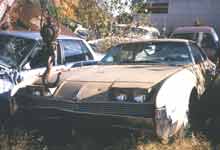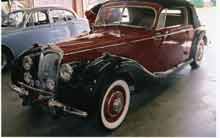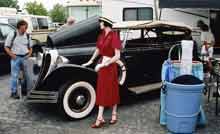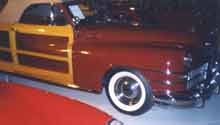Brand Banishment
General Motors has been prominent in the news lately, most recently regarding the bankruptcy of Delphi Automotive Systems, the recently-independent successor to the United Motors parts subsidiary. The troubles of this emancipated child are only one symptom of a larger corporate struggle. It's been popular lately for pundits to call The General a "health care company that makes automobiles."
Corporate cutoffs are nothing new at GM. In December 2000 it was announced that Oldsmobile, GM's longest-lived marque and a founding division of the company, was being abandoned. Then followed a starvation diet of no new product development. Finally, on April 29, 2004, the last Oldsmobile, an Alero sedan, came down the line.
Things had long seemed oh, so promising. Ransom Olds' popular curved dash model propelled the marque to first place in sales until overtaken by Ford in 1906, and it remained in the nation's mind in song for years afterwards. Even during the rather unremarkable 1930s, Oldsmobile trundled along in 5th to 7th place in the industry.
Things picked up in 1940, when Olds became GM's "idea car," introducing Hydra-Matic, the first successful fully-automatic gearbox (thanx to The Auto Channel). Engineering continued apace with the Rocket short-stroke ohv engine for 1949, making Oldsmobile the NASCAR champ for three seasons. "Jetfire" turbocharging of the intermediate aluminum V8 for 1962-3 foretold the rise of turbos in the 1980s, and the daring Toronado of 1966 proved once and for all that front wheel drive was viable with big engines. (It must be said that the concept for the drive package did not originate at GM. It was patented by Frederick Hooven, an engineer under contract to Ford Motor Company, and was intended for the 1961-63 "cigar-shaped" Thunderbirds. Brock Yates says GM licensed the Hooven/Ford patent for the Toro and similarly-configured Cadillac Eldorado of 1967.)
Despite setbacks like the baroquely-styled 1958 models and the ill-conceived diesel conversion of gasoline V8s to campaign the energy-challenged late '70s, Olds enjoyed halcyon days in which the Cutlass became the best-selling single vehicle model in the United States. Even after it was deposed by the Ford F-150 in 1982, the front-drive Cutlass Ciera copped the title for passenger cars. Alas, all good things come to an end, and the division seemed to lose heart. When the distinctive Aurora was introduced for 1995 it was bereft of any external Oldsmobile badge. The rest is history.
Many pundits feel that further brand-letting is in the cards. Buick and Pontiac are alternately rumored to be the next kids to be put on the block. My friend Paul Lashbrook thinks GM may cut the catalog back to simply Chevrolet and Cadillac. He may be right.




